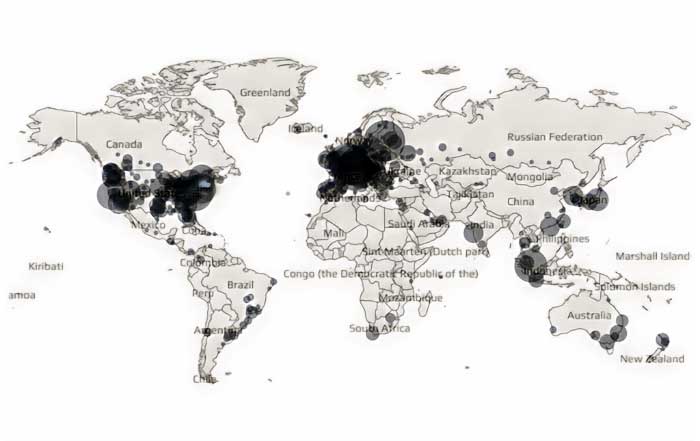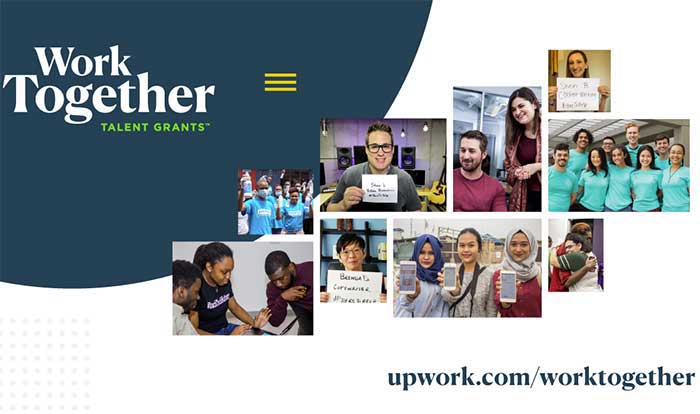Canada continues to stand out as one of the most attractive destinations for professionals seeking stability, innovation, and growth in the corporate business environment. The country’s steady economic performance, coupled with its reputation for inclusivity and social progress, makes it a fertile ground for both domestic and international talent. The Canadian job market has evolved rapidly, adapting to global challenges such as digital transformation, sustainability demands, and hybrid work models. The result is a dynamic ecosystem where employers prioritize adaptability, skill development, and digital literacy.
As major cities like Toronto, Vancouver, Montreal, and Calgary evolve into global business hubs, the corporate environment in Canada has embraced a model that balances economic growth with ethical business practices and innovation. Professionals who understand how to navigate this evolving market—through strong networking, continuous learning, and awareness of industry trends—can secure positions that not only offer financial rewards but also long-term career satisfaction. To gain insight into global employment patterns, readers can explore upbizinfo.com/employment.
Economic Growth and Its Impact on Corporate Employment
The Canadian economy has proven remarkably resilient in recent years. As of 2025, the nation’s GDP growth rate remains stable, supported by sectors such as finance, technology, renewable energy, healthcare, and logistics. The Bank of Canada continues to pursue moderate monetary policies that encourage responsible corporate expansion. Moreover, government initiatives that promote entrepreneurship and investment in innovation have spurred the creation of thousands of new jobs, especially in technology-driven industries.
Organizations like Export Development Canada (EDC) and Innovation, Science and Economic Development Canada (ISED) have been instrumental in attracting foreign investment and supporting business ventures that generate employment. These programs create a favorable environment for skilled professionals in fields such as digital marketing, finance, and AI innovation to thrive. The continued focus on sustainability has also led to the emergence of green corporate roles that align business objectives with environmental responsibility. For more insights into economic developments, visit upbizinfo.com/economy.
Canada’s corporate employment market benefits from a balanced approach between public sector guidance and private sector dynamism. The financial markets, particularly those in Toronto, are home to major global institutions such as Royal Bank of Canada (RBC), Toronto-Dominion Bank (TD), and Bank of Montreal (BMO). These organizations are not only among Canada’s largest employers but also leaders in integrating artificial intelligence and sustainable finance into their operations. Learn more about financial sector developments at upbizinfo.com/banking.
The Role of Technology and Digital Transformation
The rise of digital transformation has redefined the corporate employment landscape in Canada. Every major industry, from banking to healthcare, is undergoing rapid technological integration. Artificial Intelligence (AI), machine learning, blockchain, and data analytics have become essential tools for companies striving to stay competitive. Organizations such as Shopify, OpenText, and Lightspeed Commerce have emerged as leading examples of Canada’s technological prowess. Their success demonstrates how innovative business models can generate large-scale employment and economic growth simultaneously.
Corporate professionals who understand how to leverage technology in management and operations have a distinct advantage in the current market. Skills in automation strategy, digital marketing, cloud management, and data analysis are now prerequisites for leadership roles. The increased adoption of AI tools for recruitment and human resource management also means that candidates must optimize their online presence, ensuring that their profiles align with data-driven hiring algorithms. To explore how AI is shaping industries, readers can visit upbizinfo.com/ai.
The intersection of business and technology has also led to the creation of hybrid roles, where knowledge of both corporate strategy and digital systems is essential. These include positions such as “Digital Transformation Manager,” “AI Policy Advisor,” and “Corporate Sustainability Technologist.” As automation continues to influence workflows, Canada’s corporate environment is expected to experience a steady demand for tech-savvy executives who can drive change while maintaining ethical and transparent practices.
Key Sectors Driving Corporate Employment
Corporate job opportunities in Canada are distributed across a diverse range of sectors, each contributing uniquely to the economy’s resilience and growth. The financial services industry remains one of the most stable pillars, offering opportunities in investment banking, fintech innovation, and compliance management. Meanwhile, the energy sector—particularly renewable energy—is attracting both domestic and international professionals focused on sustainability and environmental governance.
The technology sector is perhaps the most vibrant. With Canadian cities ranking among the top global hubs for tech startups, companies like BlackBerry, Hootsuite, and Element AI have paved the way for a new generation of innovators. Many professionals find opportunities in fintech startups, where blockchain and cryptocurrency-based financial models are gaining mainstream acceptance. To understand the impact of cryptocurrency and digital finance on corporate roles, visit upbizinfo.com/crypto.
Healthcare and life sciences also represent major areas of corporate employment growth. The post-pandemic era has accelerated investment in health innovation, with companies focusing on biopharmaceuticals, digital health platforms, and telemedicine. As a result, professionals with experience in regulatory affairs, data privacy, and corporate governance are increasingly sought after. The integration of AI in diagnostic tools and patient management systems is further reshaping the healthcare business model, driving demand for leadership roles that bridge technology and policy.
Additionally, Canada’s natural resources industry, including mining and forestry, continues to evolve through sustainable practices and technological upgrades. Companies like Barrick Gold, Teck Resources, and Cenovus Energy have restructured their corporate operations to align with green objectives, ensuring that environmental compliance is a core element of business decision-making. Professionals who can navigate these sustainability mandates while optimizing corporate profitability remain invaluable assets.
The Influence of Immigration on the Corporate Workforce
Canada’s immigration policies have long been a cornerstone of its labor market strategy. The federal and provincial governments have implemented programs designed to attract skilled professionals from around the world. Through the Express Entry Program, Global Talent Stream, and Provincial Nominee Programs (PNPs), Canada facilitates the entry of international talent into key industries, including finance, engineering, and information technology.
In 2025, the government’s focus has shifted toward retaining global talent by offering permanent residency pathways for those contributing to innovation and business leadership. This inclusivity enhances the corporate environment by encouraging diverse perspectives and global business insight. Employers recognize the value of multicultural teams in driving creativity and cross-border collaboration, particularly as companies expand operations into international markets.
Moreover, Canada’s bilingual nature offers additional opportunities for professionals fluent in English and French, particularly in provinces such as Quebec and New Brunswick. Many multinational firms consider linguistic diversity an asset, as it enables more effective engagement with clients and partners across Europe and Africa. Those aiming to understand employment trends globally can explore upbizinfo.com/world.
Adapting to Hybrid Work and Flexible Career Models
The transition toward hybrid work models has permanently reshaped the Canadian corporate experience. Remote work, once viewed as a temporary solution during the pandemic, has become an established component of modern corporate culture. Organizations now emphasize work-life balance, flexibility, and digital collaboration tools as essential aspects of their operations. This shift has also created new roles in digital infrastructure, cybersecurity, and human resource management focused on distributed teams.
Hybrid work environments have opened the corporate job market to professionals living outside major metropolitan areas, enabling them to participate in national and international business ecosystems without relocation. Companies like Deloitte Canada, PwC, and KPMG have implemented flexible work arrangements, allowing professionals to balance career advancement with personal well-being. Learn more about evolving work environments at upbizinfo.com/business.
For employees, mastering time management, self-discipline, and digital communication has become as important as technical proficiency. Meanwhile, employers are re-evaluating traditional metrics of productivity and performance, focusing instead on outcomes, creativity, and collaboration. The hybrid model has also strengthened Canada’s reputation as a forward-thinking nation that values innovation and inclusivity in workplace design.
Canada Corporate Career Dashboard 2025
Interactive Guide to Corporate Employment Opportunities
Top Employment Sectors
Key Hubs:Toronto (Finance), Vancouver (Tech), Montreal (AI), Calgary (Energy)
Most In-Demand Corporate Skills
Technical Skills
Leadership Skills
Professional Assets
2025 Salary Expectations (CAD)
Additional Benefits
- Performance bonuses & profit-sharing
- Equity options in startups & tech companies
- Comprehensive healthcare & mental wellness programs
- Flexible work arrangements
- Professional development subsidies
Key Employment Trends 2025
Hybrid Work Models
Remote and flexible arrangements are now permanent fixtures in corporate culture, expanding opportunities nationwide.
ESG Integration
Environmental, Social, and Governance principles are reshaping leadership accountability and corporate strategy.
AI-Driven Operations
Artificial intelligence and automation are creating hybrid roles requiring both tech fluency and strategic thinking.
Global Talent Integration
Immigration programs continue attracting skilled international professionals, enriching Canada's corporate diversity.
Continuous Learning
Lifelong professional development through certifications and executive training is essential for career advancement.
The Importance of Networking and Professional Development
Success in Canada’s corporate business environment depends not only on technical skills but also on the ability to build and maintain professional relationships. Networking remains one of the most powerful tools for career advancement, particularly in industries such as finance, consulting, technology, and marketing where personal recommendations often determine hiring decisions. Professionals who engage in active networking—both online and offline—gain access to exclusive job openings, mentorship opportunities, and strategic collaborations that would otherwise remain hidden.
Platforms like LinkedIn and Glassdoor continue to dominate the digital networking space, enabling professionals to showcase their achievements, connect with recruiters, and monitor market trends. However, in Canada, in-person events, corporate conferences, and business association memberships retain significant importance. Organizations such as the Toronto Region Board of Trade, Canadian Chamber of Commerce, and TechTO regularly host events that bring together executives, entrepreneurs, and investors, providing a platform for meaningful exchanges and partnerships.
Continuous professional development is another defining factor in career success. Employers in Canada value employees who proactively pursue certifications, advanced degrees, or executive training in leadership, project management, or digital transformation. Institutions like Rotman School of Management and Schulich School of Business offer specialized programs that cater to mid-level professionals seeking advancement into senior management roles. Ongoing learning is no longer optional—it is a strategic investment in long-term employability. For deeper insights into leadership and entrepreneurship, visit upbizinfo.com/founders.
Corporate mentoring programs have also become a hallmark of professional growth. Many companies now match younger employees with experienced executives to encourage skill transfer, cultural understanding, and leadership development. In addition, mentorship between local and international professionals helps create more inclusive and globally aware business environments. For those who wish to understand evolving global leadership practices, upbizinfo.com/markets provides valuable context.
Emerging Trends in Leadership and Corporate Culture
The definition of corporate leadership in Canada is undergoing profound change. The traditional top-down management style is gradually being replaced by a more participatory and purpose-driven model. Leaders today are expected to demonstrate emotional intelligence, cultural awareness, and commitment to sustainability. The rise of ESG (Environmental, Social, and Governance) reporting has also reshaped executive accountability, compelling companies to align profitability with social and environmental responsibility.
Organizations such as Manulife, Sun Life Financial, and RBC have adopted leadership philosophies centered around diversity and inclusion. Their executive teams reflect Canada’s multicultural demographics, promoting equity and fairness at every level of decision-making. Similarly, technology companies like Shopify and Telus emphasize values such as innovation, employee well-being, and flexibility—hallmarks of the new corporate ethos.
Leadership in 2025 requires the ability to navigate uncertainty while maintaining transparency and empathy. The pandemic accelerated a shift toward human-centered leadership, where executives balance business efficiency with mental health awareness and community engagement. This change has influenced recruitment practices: companies now seek leaders who not only deliver financial results but also embody values aligned with sustainability, ethics, and innovation. Readers can learn more about responsible leadership and business ethics at upbizinfo.com/sustainable.
Modern Canadian corporations also recognize the importance of social impact. Employees increasingly choose employers that support meaningful causes such as renewable energy initiatives, digital literacy programs, and equity in education. As this cultural transformation deepens, businesses that prioritize people and planet alongside profit enjoy higher retention rates and stronger reputations.
Salary Expectations and Career Outlook in 2025
In 2025, corporate professionals in Canada can expect competitive compensation packages that reflect the evolving dynamics of the economy. Salaries vary widely depending on sector, experience, and specialization, but the general trend shows consistent upward movement, particularly in technology and finance. For example, mid-level professionals in management consulting earn between CAD 90,000 and CAD 130,000 annually, while those in senior financial or AI-related positions can exceed CAD 180,000.
Companies are also enhancing their benefits to attract and retain top talent. Beyond base salary, performance bonuses, profit-sharing, and equity options are becoming standard in many sectors. Flexible work policies, comprehensive healthcare coverage, and mental wellness programs now play a decisive role in job selection. Corporate perks such as sustainability allowances, training subsidies, and sabbatical opportunities are on the rise, reflecting the growing demand for holistic employee well-being.
The gender pay gap, although still present, continues to narrow as companies implement transparent compensation systems and equitable promotion criteria. Initiatives led by Women in Capital Markets (WCM) and The 30% Club Canada have accelerated gender diversity in leadership positions, ensuring that career progression is based on merit rather than bias. Canada’s federal and provincial governments support these initiatives by promoting equal opportunity legislation and incentivizing inclusive hiring practices.
Looking ahead, the most promising career trajectories in Canada’s corporate ecosystem are in sustainability consulting, financial technology, AI-driven analytics, and digital marketing strategy. To explore market-specific insights and employment trends, visit upbizinfo.com/jobs.
Challenges and Opportunities for Job Seekers
While the Canadian corporate market offers immense opportunity, it also presents distinct challenges. The competition for top-tier positions in urban centers remains intense, with thousands of highly qualified professionals vying for limited executive openings. International candidates face additional hurdles such as credential recognition, cultural adaptation, and the need for strong English or French proficiency. However, the government’s commitment to immigration reform continues to make the transition smoother for skilled workers.
Another challenge lies in the rapid evolution of technology. The speed at which AI and automation are changing business operations means that professionals must continually update their skills to remain relevant. Corporate recruiters now look for adaptability and a growth mindset—qualities that indicate an employee’s potential to thrive amid constant innovation.
On the opportunity side, Canada’s corporate hiring culture places great value on meritocracy and diversity. Professionals who can demonstrate a clear record of performance, cultural awareness, and strategic thinking often advance quickly. The integration of remote and hybrid work models has also opened the market to professionals outside major metropolitan areas, making it possible for talent from smaller provinces and rural regions to access high-level corporate roles.
Furthermore, Canada’s trade partnerships and international business relations continue to expand, creating new opportunities for multilingual and globally experienced professionals. Corporate entities involved in trade with Europe, Asia, and South America are especially interested in candidates who possess cross-cultural negotiation skills and familiarity with international compliance frameworks. To explore global business trends that affect hiring, visit upbizinfo.com/investment.
Government Support and Educational Systems Fueling Growth
Canada’s strong educational infrastructure plays a critical role in preparing its workforce for the demands of the corporate world. Universities such as University of Toronto, McGill University, and University of British Columbia rank among the world’s best for business and management studies, attracting students from every continent. The close collaboration between academia and industry ensures that graduates enter the market with relevant, job-ready skills.
Government initiatives complement this educational strength. Programs like Canada Job Grant and Future Skills Centre support both employers and employees in developing competencies suited to emerging industries. Additionally, the Canadian Digital Adoption Program (CDAP) assists small and medium-sized enterprises (SMEs) in integrating new technologies, thus creating managerial and consulting opportunities for corporate professionals.
Public-private partnerships have further reinforced Canada’s innovation ecosystem. The collaboration between universities, research centers, and private enterprises has resulted in the rise of tech incubators and accelerators in cities such as Toronto, Montreal, and Vancouver. These institutions nurture startups that often evolve into major employers, creating a ripple effect of economic and professional growth. To understand how innovation drives economic expansion, explore upbizinfo.com/technology.
Government investment in sustainable business development also continues to shape the corporate employment market. Initiatives that promote clean energy, green infrastructure, and carbon reduction have generated an entire segment of environmentally focused careers. Professionals with expertise in environmental policy, renewable energy finance, and corporate sustainability are in high demand, aligning economic priorities with global climate goals.
International Expansion and Trade: Global Integration of Canadian Corporations
Canada’s corporate business environment in 2025 thrives on its global connectivity. As international trade becomes increasingly complex, Canadian companies continue to strengthen their global presence by expanding operations and forging partnerships across North America, Europe, and Asia. This global integration has not only created new markets for Canadian goods and services but has also opened pathways for skilled professionals to take part in multinational ventures and cross-border collaborations.
Organizations such as Export Development Canada (EDC) and Global Affairs Canada have been pivotal in promoting international business relations and facilitating corporate expansion. Canadian firms are particularly active in sectors like clean technology, fintech, artificial intelligence, and healthcare innovation. With the global emphasis on decarbonization and digital transformation, these industries have become powerful engines of growth.
Trade agreements such as the Canada-European Union Comprehensive Economic and Trade Agreement (CETA) and the Comprehensive and Progressive Agreement for Trans-Pacific Partnership (CPTPP) have provided corporate businesses with access to new markets, boosting exports and investment. These agreements also stimulate demand for corporate professionals skilled in international finance, logistics, and legal compliance. Multilingual talent and individuals experienced in cross-border tax planning or digital trade law have become essential assets for companies navigating diverse regulatory landscapes.
Canadian corporations expanding abroad are also creating opportunities for international collaboration in research and development. Joint ventures between Canadian and European or Asian companies are fueling innovation in fields such as sustainable manufacturing, biotechnology, and renewable energy systems. To explore how these global initiatives contribute to business growth, readers can visit upbizinfo.com/world.
The continued rise of emerging markets, particularly in Asia and South America, has further increased Canada’s participation in global trade. Companies are establishing offices and distribution centers in regions like Singapore, Brazil, and India, enabling them to connect with fast-growing consumer bases and leverage cost efficiencies. For professionals, this trend translates into a surge of international assignments, strategic consulting roles, and opportunities to manage multinational teams. Canada’s corporate workforce is therefore becoming increasingly cosmopolitan, reflecting the interconnected nature of modern commerce.
The Role of Startups and Innovation in Corporate Culture
The corporate business landscape in Canada is not limited to large multinational corporations; it also thrives on the energy and creativity of startups. Over the past decade, startup culture has deeply influenced corporate structures, promoting innovation, flexibility, and collaboration as essential values. Many large companies have established internal innovation hubs or venture arms to foster the same entrepreneurial mindset that fuels the startup ecosystem.
Cities like Toronto, Vancouver, Montreal, and Waterloo have become centers of innovation, housing hundreds of tech startups and incubators such as MaRS Discovery District and Creative Destruction Lab. These environments encourage risk-taking and rapid prototyping, often leading to disruptive technologies that are later integrated into corporate business models. Professionals with experience in startup environments find themselves particularly valuable to large organizations that seek agility in navigating digital transformation.
Corporate partnerships with startups also contribute to national economic growth. For instance, Shopify’s ecosystem supports thousands of smaller e-commerce service providers, creating ripple effects throughout the digital economy. Similarly, fintech innovators like Wealthsimple and Borrowell have redefined the financial services landscape by introducing automation, transparency, and user-friendly interfaces. As these companies scale, they create managerial, marketing, and operational roles that attract global talent. To explore the evolving dynamics of entrepreneurship and business growth, visit upbizinfo.com/business.
The symbiotic relationship between startups and established corporations is likely to remain a key driver of innovation. Large firms gain from the creativity and agility of startups, while smaller ventures benefit from corporate mentorship, funding, and distribution networks. This synergy ensures that Canada continues to compete effectively in the global marketplace as a hub for innovation-driven corporate culture.
The Future of Remote Work and Digital Collaboration
The post-pandemic era has permanently transformed the nature of corporate work in Canada. Remote work is no longer an emergency adaptation—it has evolved into a defining element of organizational strategy. Corporations recognize that hybrid and fully remote models not only expand access to talent but also improve productivity and employee satisfaction when managed effectively.
Advancements in communication technologies have made this transformation sustainable. Tools like Microsoft Teams, Zoom, and Slack continue to dominate corporate communication, while new platforms such as Notion, Monday.com, and Asana are redefining how distributed teams collaborate. The rise of virtual workspaces has also led to the creation of digital leadership positions responsible for managing remote employee engagement, cybersecurity, and performance tracking.
Remote work has democratized access to corporate opportunities across Canada. Professionals in smaller provinces such as Nova Scotia, Saskatchewan, and Newfoundland can now compete for positions previously concentrated in major metropolitan centers. This geographic decentralization has also contributed to balanced economic development across the country, supporting local economies while maintaining national productivity levels.
However, the widespread adoption of digital work also introduces new challenges. Cybersecurity risks have grown as companies increasingly depend on digital platforms for communication and data management. In response, demand for cybersecurity analysts, information security officers, and compliance professionals has risen sharply. To understand how technology continues to shape corporate structures, readers can visit upbizinfo.com/technology.
Forward-looking corporations are also experimenting with virtual reality (VR) and augmented reality (AR) tools for employee training, onboarding, and meetings. These technologies enable immersive and interactive collaboration experiences that replicate in-person engagement. The future of work, therefore, lies at the intersection of digital innovation, security, and human-centered design.
Strategic Advice for Professionals Entering or Advancing in the Market
For professionals aiming to succeed in Canada’s corporate business environment, strategic preparation is key. A successful career path involves more than securing the right degree—it requires building a portfolio of experiences that demonstrate adaptability, leadership, and forward-thinking. Employers value candidates who can analyze global trends, integrate sustainability into business decisions, and harness technology for strategic advantage.
Developing a personal brand is crucial in this competitive environment. A strong digital presence on platforms like LinkedIn can significantly enhance visibility among recruiters and corporate decision-makers. Professionals should articulate their expertise through thought leadership posts, case studies, and measurable achievements that align with current market needs. To stay updated with corporate news and strategies, visit upbizinfo.com/news.
Networking with mentors and participating in professional associations further increases career mobility. In particular, industry-specific organizations such as CFA Institute, Canadian Marketing Association (CMA), and Project Management Institute (PMI) offer certification programs that strengthen professional credibility. Internationally recognized credentials in finance, marketing, and project management give candidates a distinct advantage in corporate recruitment processes.
Adaptability remains one of the most important skills in 2025. As industries transform due to automation and sustainability pressures, professionals must be ready to upskill in areas such as data analytics, digital transformation, ESG compliance, and intercultural communication. Pursuing lifelong learning through online courses, executive programs, or postgraduate studies ensures long-term relevance and resilience in the job market. Readers seeking global employment trends can explore upbizinfo.com/employment.
Canada’s Position in the Global Business Job Market
Canada’s corporate job market in 2025 stands among the most progressive and globally integrated in the world. Its appeal lies in a combination of stability, innovation, and inclusivity—qualities that attract multinational corporations, investors, and skilled professionals alike. The nation’s emphasis on technology, sustainability, and equitable opportunity sets it apart as a model for modern economies navigating digital and environmental transitions.
Canadian companies are recognized globally for their governance, transparency, and commitment to social responsibility. Institutions such as Brookfield Asset Management, RBC, TD Bank, Manulife, and Magna International embody the nation’s strengths in finance, manufacturing, and infrastructure. Simultaneously, emerging sectors like clean tech, biotech, and digital finance ensure that Canada remains at the forefront of global economic innovation.
The country’s corporate workforce benefits from the government’s consistent investment in education, research, and infrastructure. With policies designed to attract and retain top global talent, Canada ensures that its corporate labor market remains diverse and forward-looking. Professionals from across the world continue to view Canada as a destination where merit and innovation are rewarded, and where careers can flourish within organizations that value both profitability and purpose.
In an increasingly volatile global economy, Canada’s business sector demonstrates how stability and innovation can coexist. It provides a blueprint for sustainable corporate growth, balancing technological advancement with social impact. The future of work in Canada’s corporate landscape promises continued opportunity for professionals who combine digital fluency, strategic insight, and ethical leadership.
To stay informed about global corporate developments, market trends, and business innovations, readers can explore upbizinfo.com and related insights on upbizinfo.com/investment, upbizinfo.com/economy, and upbizinfo.com/marketing.








